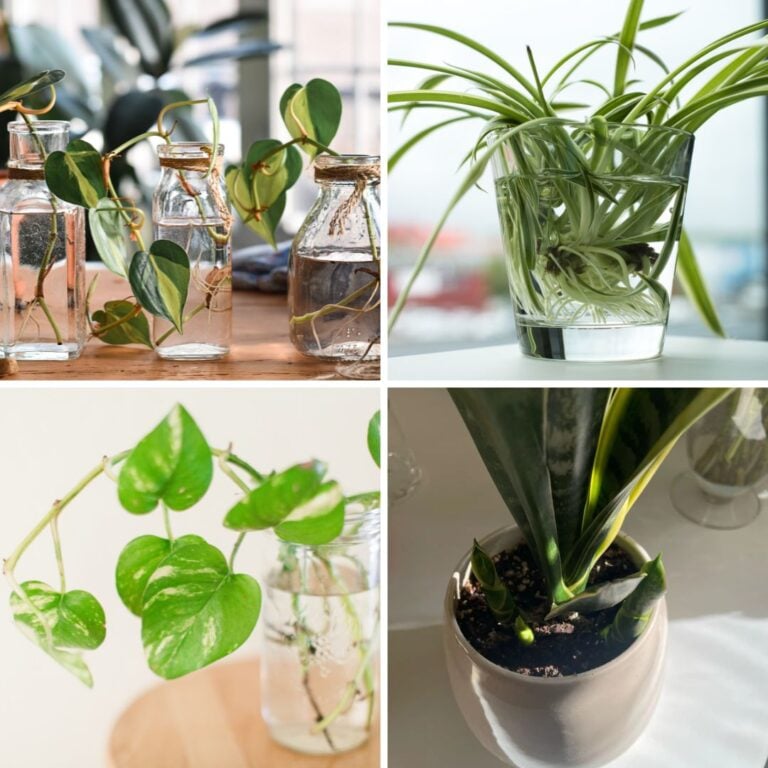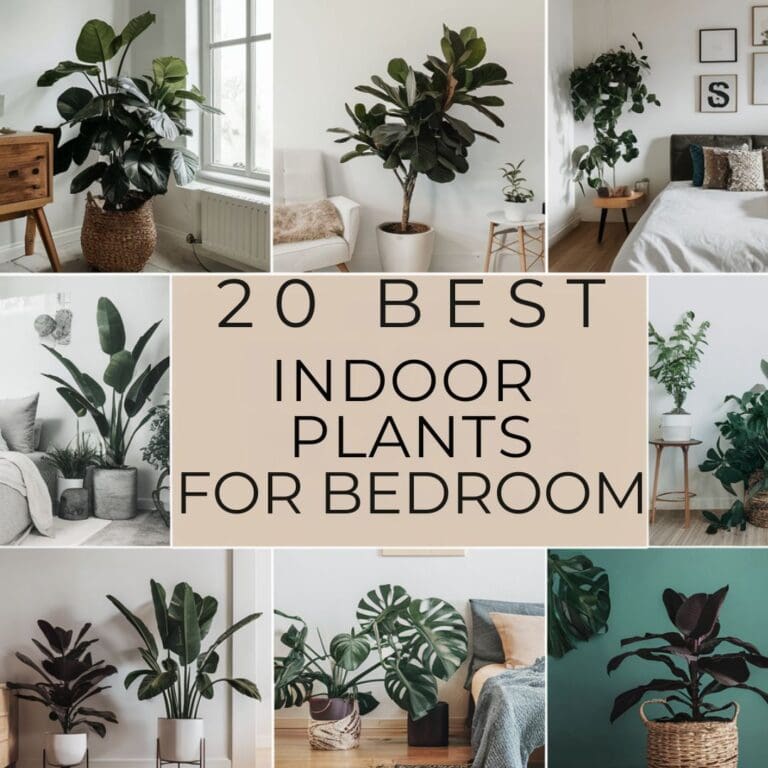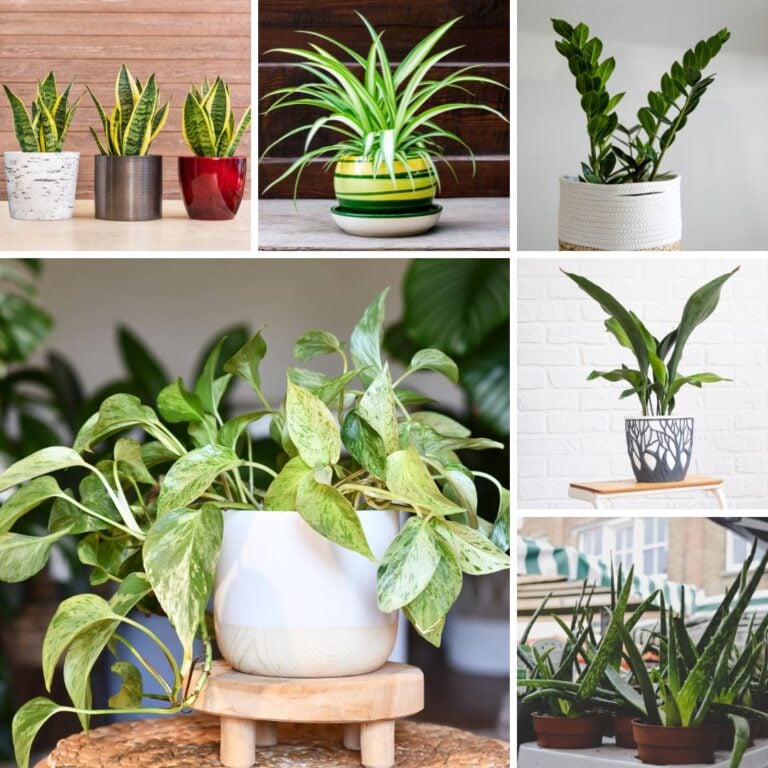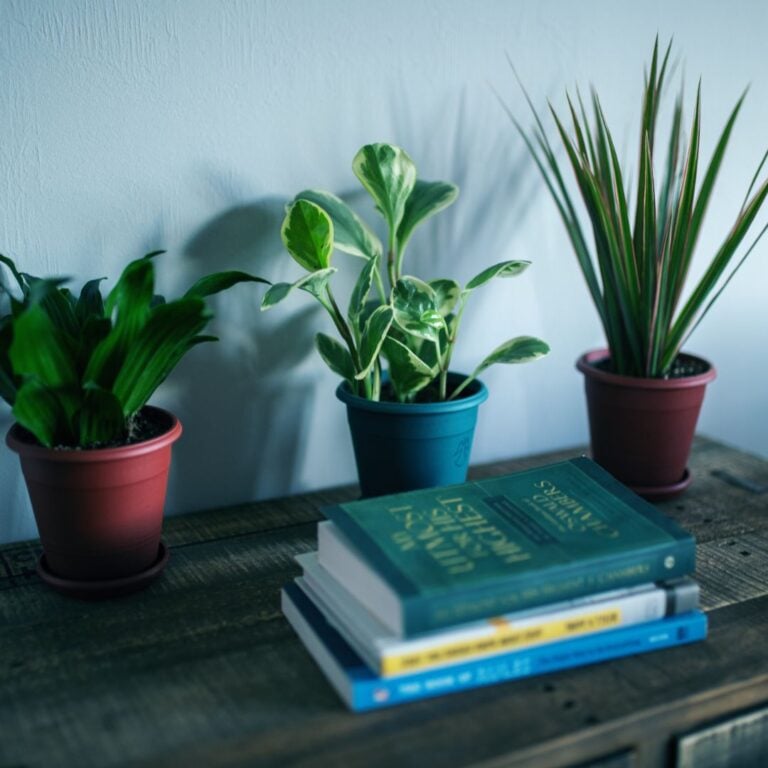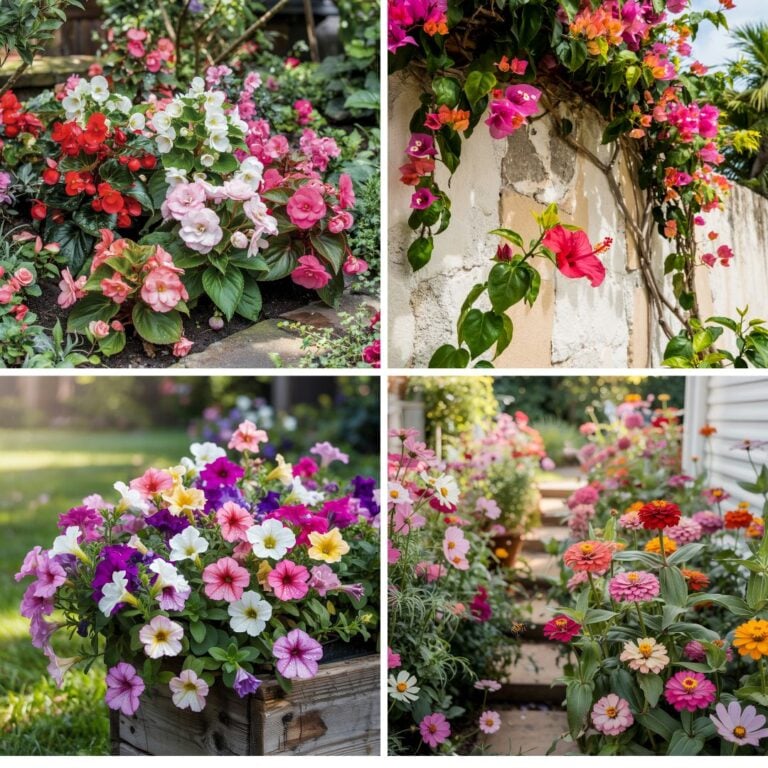3 Fall-Friendly Vines That Look Great Indoors
I really enjoy bringing that fall feeling into my home, and indoor vines make it surprisingly simple. The right vines can cozy up a room and even help clean the air a bit.
There are a lot of options out there, so it’s tough to pick sometimes. I’ll share a few of my favorite fall-friendly vines that brighten up my space and actually thrive indoors.
Please note: Simplify Plants is reader-supported. As an Amazon Associate, I earn from qualifying purchases made by our readers with no extra cost added to you all! Some links in the post are affiliate links and I get a commission from purchases made through links in the post.
1) English Ivy

English Ivy is a classic—I just love having it around, especially when the weather cools off. It grows well inside, and those green leaves look good just about anywhere.
Caring for ivy isn’t complicated. I keep mine in bright, indirect light, but not direct sun since that can make the leaves go brown.
I water when the top of the soil is dry to the touch. Overwatering is a no-go, so I always check first. Sometimes, I’ll mist the leaves if my place feels a bit dry.
English Ivy looks really nice in a hanging basket or trailing off a shelf. I like shaping it around a little trellis, too, when I’m in the mood for something tidier.
It’s also a decent air purifier. The leaves can trap dust and may help with some airborne stuff, making the room feel fresher.
I give it a trim when it starts looking wild. That keeps things healthy and encourages new, fuller growth.
One thing to note—pets shouldn’t munch on English Ivy. I keep mine up high, far from my cat’s curious paws.
With its easy care and pretty vines, English Ivy is definitely one of my top fall houseplants. It just brings the room to life.
2) Pothos (Epipremnum aureum)

Pothos is another vine I keep coming back to. It’s got those heart-shaped leaves and long, trailing stems—so simple but so nice. Super popular, probably because it’s so easy to care for.
Pothos isn’t fussy about where it lives. It handles both bright, indirect light and lower light just fine. I’ll put it on a shelf, hang it up, or let it dangle from a bookcase.
Watering is straightforward. I wait until the top inch of soil dries out before watering again. Good drainage is a must, though—this plant hates soggy roots.
During fall, pothos really helps a room feel cozier. Its green leaves brighten things up, and sometimes there are yellow or white streaks that I find really pretty.
It’s a tough plant, too. If I forget a watering here and there, it usually bounces back. That’s a relief for anyone who’s a little forgetful.
I trim the stems if they get too wild. The cuttings root easily in water, so I’ll often start a new pot or share with friends.
Just a heads up—pothos isn’t safe for pets. It can be toxic to cats and dogs, so I keep mine out of reach.
Pothos grows quickly if it’s happy. Watching new leaves unfurl is always a little thrill.
It’s a low-effort way to get some green, trailing vines indoors, especially when the days get chilly.
3) Hoya Heartleaf

I’ve got a soft spot for the Hoya Heartleaf vine. The leaves look like little hearts—seriously cute and pretty unique. They’re thick, glossy, and catch the light in a nice way.
People call it the “Sweetheart Plant.” It’s a good pick for fall since it doesn’t need much attention. This one fits into my busy schedule just fine.
My Hoya Heartleaf seems happiest near a window. It likes bright, indirect light, but I keep it out of harsh sun to avoid leaf burn.
Watering is a breeze—I just check the soil, and if it’s dry, I give it a little drink. If the leaves start to feel soft, that’s my cue it needs more water.
The vines can get long and trail from shelves or baskets, which I love. Sometimes I’ll wrap them around a small trellis if I want to tidy them up.
Generally, this vine is safe for most homes. Still, I keep an eye out and make sure pets aren’t snacking on the leaves. Better to be cautious.
Every once in a while, if I’m lucky, my Hoya Heartleaf will put out tiny clusters of star-shaped flowers. Not super common indoors, but it’s a nice bonus when it happens.
The Hoya Heartleaf brings a fresh, green vibe to my space, especially as it gets colder outside. Its heart-shaped leaves just make the room feel more welcoming.
Choosing the Right Indoor Vines for Fall
I want vines that actually do well indoors during fall and fit my space (and, let’s be honest, my lifestyle). Lighting, temperature, and safety for pets or kids are all things I think about.
Light and Temperature Considerations
Fall means shorter days and cooler temps, so light can be scarce. I go for vines that handle low to medium light, like pothos and philodendron.
East or west-facing windows usually give enough gentle light. I steer clear of cold drafts—plants don’t like sudden changes. Most vines are happiest between 65°F and 75°F.
If leaves look yellow or pale, they probably need more light. Sometimes I’ll use a small LED grow light if my place feels extra gloomy.
Safe and Non-Toxic Vine Options
Since I’ve got pets and sometimes kids around, I stick with vines that aren’t risky if someone gets curious. Some vines are toxic if eaten, so I always double-check before bringing a new one home.
Safe bets include hoya (wax plant) and swedish ivy. Both have great leaves and are less likely to cause problems. On the other hand, I skip devil’s ivy (pothos) and philodendron if pets might get into them.
Quick reference:
- Non-toxic: Hoya, Swedish Ivy
- Toxic: Pothos, Philodendron, English Ivy
I always check a reliable source before adding a new vine to my collection.
Tips for Keeping Indoor Vines Lush in Autumn

My vines get a bit more attention in the fall. Cooler, drier days mean I have to tweak how I water, humidify, and feed them.
Watering and Humidity Needs
Autumn usually means less sun, so I water less often. I poke a finger into the soil—if the top inch is dry, it’s time to water. Soggy roots are bad news, so I let extra water drain out.
My quick watering checklist:
- Water when the top inch is dry
- Use water that’s room temperature
- Make sure pots drain well
To fight dry air, I group my plants together. Sometimes I’ll run a small humidifier or set a tray of water and pebbles under my vine’s pot. It really helps keep brown tips away.
Seasonal Fertilizing Advice
Growth slows down in fall, so I cut back on fertilizer. I switch to half-strength fertilizer and feed once a month at most. Too much can build up salts and mess with the roots.
Here’s my little fertilizing table for fall:
| Step | What I Do |
|---|---|
| Fertilizer strength | Use half the usual amount |
| Frequency | Once a month |
| Product type | Balanced liquid fertilizer for houseplants |
I always water before fertilizing. That way, the roots don’t get burned and the food spreads out better.
Frequently Asked Questions
People ask a lot about indoor vines, especially when fall rolls around. Here are some clear answers if you’re thinking about bringing vines inside.
What are some fast-growing vines that thrive indoors?
Pothos is my go-to for fast growth. It can put on several feet in just a few months if it’s happy.
English Ivy grows quickly too, as long as it’s got enough light and water. I trim it often to keep it tidy.
Can you recommend any flower-bearing vine plants suitable for indoor settings?
Hoya Heartleaf is my top pick for a flowering indoor vine. Those heart-shaped leaves and clusters of small, fragrant flowers are a treat.
Some Hoyas will bloom even on a windowsill, which is always a nice surprise.
How can I identify different indoor vine plants?
I look at leaf shape, color, and how the plant grows. Pothos leaves are green with yellow or white streaks, while English Ivy has lobed, pointed leaves.
Hoyas? Thicker, waxy leaves. Comparing these details makes it pretty easy to tell them apart.
Could you suggest indoor vine plants that require low light conditions?
Pothos is probably the best for low light. It keeps going, even if it’s not near a window.
English Ivy does okay in shaded rooms too, just not total darkness.
What are the main types of vine plants that I can grow indoors?
My favorites are Pothos, English Ivy, and Hoya Heartleaf. All of these work well in pots and look great hanging or trailing.
I’ll try other vines now and then, but these three are the ones I keep coming back to.
Are there vine plants that can be transitioned from outdoors to indoors during fall?
English Ivy is actually pretty easy to bring inside before that first frost sneaks up. Honestly, it seems to adjust to indoor light and temperature without much fuss.
Many Hoyas can handle the move indoors too, as long as I keep them away from chilly drafts. Just make sure they get enough light—they can be a bit picky about that.
Recommended Garden Supplies
| Product Image | Our Recommended Gardening Supplies | Check Offers! |
|---|---|---|
Top Top
Top
Top
Top
Top
Top
Top
Top | rePotme Houseplant and Tropical Classic Potting Soil Mix | Check Offer On Amazon |
 Top
Top
Top
Top
Top
Top
Top
Top | Espoma Organic Indoor Plant Food | Check Offer On Amazon |
 Top
Top
Top
Top
Top
Top
Top
Top | GooingTop LED Grow Light 6000K Full Spectrum Clip Plant Growing Lamp | Check Offer On Amazon |
 Top
Top
Top
Top
Top
Top
Top
Top | Soil Moisture Meter | Check Offer On Amazon |
 Top
Top
Top
Top
Top
Top
Top
Top | Govee Hygrometer Thermometer, Bluetooth Enabled! | Check Offer On Amazon |
 Top
Top | LEVOIT Humidifiers for Large Room(Best For Plants) | Check Offer On Amazon |
 Top
Top
Top
Top
Top
Top
Top
Top | Upgraded DIY Automatic Drip Irrigation Kit, 15 Potted Houseplants Support | Check Offer On Amazon |
 Top
Top
Top
Top
Top
Top
Top
Top | Stainless Steel Heavy Duty Gardening Tool Set | Check Offer On Amazon |
 Top
Top
Top
Top
Top
Top
Top
Top | Bonide Insecticidal Soap | Check Offer On Amazon |
 Top
Top
Top
Top
Top
Top
Top
Top | Bonide 32 oz Spray Neem Oil for Organic Gardening | Check Offer On Amazon |
 Top
Top
Top
Top
Top
Top
Top
Top | Garden Safe Fungicide | Check Offer On Amazon |

